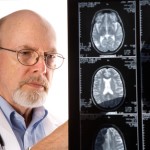
Every year an estimated 152,000 people in the UK suffer a stroke (for more general information go to the Stroke Association website). Quality of life post stroke is not only influenced by physical impairment but also by psychological factors. Although anxiety disorders are the most common mental health problem globally, the study of anxiety post-stroke has had less attention than depression.
A recent study published in the International Journal of Stroke has pulled together relevant published data to examine the frequency of post-stroke anxiety.
Methods
The researchers conducted a systematic review of all publications in MEDLINE, EMBASE, PsycINFO, Allied and Complementary Medicine, CINAHL, and Proquest dissertation. The review included observational studies of patients who had a clinical diagnosis of stroke (ischemic or hemorrhagic stroke) or transient ischemic attack (TIA) and were diagnosed with an anxiety disorder, or assessed for anxiety symptoms on a rating scale (e.g. the Hospital Anxiety and Depression Scale or HADS).
The search up to March 2011 yielded 44 eligible studies. The mean age of participants ranged from 51-76 years. More than 50% of the participants were male. Studies were grouped into four categories; Population based studies (n=5), hospital (n=20) and rehabilitation (n=14) based studies and community based (n=5) studies.
Results

The study found that nearly 1 in 5 stroke patients suffer from anxiety disorders
- The prevalence of anxiety disorders post-stroke was 18% [95% confidence interval (CI) 8–29%, P < 0·001)]
- The prevalence of anxiety symptoms was 25% [95% CI 21–28%, P < 0·001]
- 3 studies that found that phobic disorders and Generalized Anxiety Disorder (GAD) were the most common anxiety disorder post stroke
- There was a non-significant increase in the prevalence of anxiety over time. The overall frequency post stroke was:
- 20% [95% CI 13–26%, P < 0·001)] at <1 month
- 23% [95% CI 19%-27%, P < 0·001)] 1-5 months
- 24% [95% CI 19–29%, P < 0·001)] 6 months or more
- Anxiety prevalence was significantly lower in rehabilitation-based studies relative to the others 13% [95% CI 4–21%] in the acute phase post stroke
- There was a positive association between depression and anxiety in all studies where it was assessed
Limitations
- The heterogeneity between studies was very high (I2 = 97%). This means that although 44 studies were eligible, there were many conclusions drawn from only a small number of these studies, making interpretation difficult
- The authors also applied many exclusion criteria which impacts on the generalizabilty of the results
- Data analysis (funnel plot) suggests some publication bias in favour of studies with higher prevalence estimates
- Few studies measured pre-stroke anxiety making it difficult to determine if the anxiety reported was a consequence of the stroke
Conclusions
The authors concluded that…
Given the pervasiveness of anxiety after stroke, an understanding of its impact on the patient and economic burden is warranted.

A better understanding of the impact of anxiety post stroke on the patient and the economic burden is warranted.
In cardiovascular illnesses such as coronary artery disease, anxiety worsens disease outcomes and may even increase the risk of death (Martins et al., 2010, Moser et al., 1996). Much less is known about co-morbid anxiety and stroke. In spite of issues with the heterogeneity of studies, this is a useful systematic review. By establishing that anxiety disorders and symptoms of anxiety are relatively common post stroke, this paper sets the scene for more research in this area.
Studies similar to those in the field of cardiovascular illness and anxiety would be useful to establish whether anxiety post stroke impacts on morbidity, mortality and quality of life.
Links
- Campbell Burton, C. A., Murray, J., Holmes, J., Astin, F., Greenwood, D. and Knapp, P. (2012), Frequency of anxiety after stroke: a systematic review and meta-analysis of observational studies. International Journal of Stroke. doi: 10.1111/j.1747-4949.2012.00906.x [PubMed abstract]
- Stroke Association website: www.stroke.org.uk
- Hackett, Yapa, Parag and Anderson.Frequency of depression after stroke. A systematic review of observational studies (PDF). Stroke. 2005;36:000-000.
- Moser DK, Dracup K. Is anxiety early after myocardial infarction associated with subsequent ischemic and arrhythmic events? (PDF). Psychosom Med 1996; 58:395–401.
- Martens, de Jonge , Na , Cohen, Lett, Whooley. Scared to death? Generalized anxiety disorder and cardiovascular events in patients with stable coronary heart disease: the Heart and Soul Study (full text). Arch Gen Psychiatry 2010; 67:750-8.


Anxiety is a common negative psychological outcome after stroke. How does this impact on the patient? http://t.co/JkscX3aSYT via @mental_elf
@ag2460 blogs about a new systematic review of observational studies about post-stroke #anxiety http://t.co/JcNM4jpFdF
Systematic review finds that nearly 1 in 5 #stroke patients suffer from #anxiety disorders http://t.co/JcNM4jpFdF
A better understanding of the impact of post-stroke anxiety on the patient & the economic burden is needed http://t.co/JcNM4jpFdF
Pls RT @TheStrokeAssoc New systematic review on how anxiety disorders can affect stroke patients http://t.co/JcNM4jpFdF
More research needed to find out how post-stroke anxiety impacts on morbidity, mortality and quality of life http://t.co/JcNM4jpFdF
Anxiety is a common negative psychological outcome after stroke. How does this impact on the patient? – http://t.co/2R5gk7zgaS